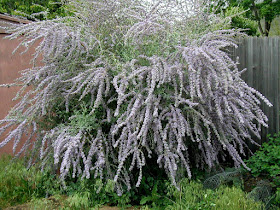 |
| Mother Fittonia |
I’ve been into trying new
things in the garden for most of my adult life, but one thing I had yet to
experiment with is propagating house plants. I saw my perfect opportunity to
give it a whirl when our office manager was trimming her Fittonia this Winter.
I snagged two tip cuttings from her, did some quick research, and away I went
on my adventure in propagation.
 The ideal medium to use
when propagating your houseplants is sand, vermiculite, perlite, or peat moss.
I had some seed starting soil on hand, so I went with that, it was an adventure,
after all. The tip cuttings I started with included the apex of the plant and
two nodes. They were about 4 inch segments.
The ideal medium to use
when propagating your houseplants is sand, vermiculite, perlite, or peat moss.
I had some seed starting soil on hand, so I went with that, it was an adventure,
after all. The tip cuttings I started with included the apex of the plant and
two nodes. They were about 4 inch segments.
I used small paper cups
to start the cuttings. It is important to moisten your media before planting
your cuttings. It was especially important for me as my medium had been under
the sink in my office for who knows how long! After thoroughly wetting the
medium, I buried the bottom inch or so of the cuttings in the medium, and
firmed it so the cutting would stand up straight.
 Since new cutting do not
yet have a root system, it is important to maintain very high humidity while
they are in the process of rooting. To accomplish this, I placed a gallon sized
plastic zipper bag over the plants. I blew air into the bags to puff them up,
and I left a little space between the bottom of the bag and the plate the cups
were sitting on to let a little air in. I misted them well with some room
temperature water, which created a mini greenhouse environment for my new
babies.
Since new cutting do not
yet have a root system, it is important to maintain very high humidity while
they are in the process of rooting. To accomplish this, I placed a gallon sized
plastic zipper bag over the plants. I blew air into the bags to puff them up,
and I left a little space between the bottom of the bag and the plate the cups
were sitting on to let a little air in. I misted them well with some room
temperature water, which created a mini greenhouse environment for my new
babies.
After a week, I started
to introduce the plants to more air by using a hole punch to make a new set of
holes every couple of days. It usually takes Fittonia about 2 weeks to produce
roots. Once there is a one inch root the plants can be transplanted into larger
pots. At the two week mark I transplanted them into 6-inch plastic pots. It was
clear after a day that they were not ready to be out of the zipper bag
greenhouse, so I kept the bags on for a while longer. I took the bags off
during the work day for increasing amounts of time to try and wean the plants
off of them.
By four weeks the plants
were doing well without the bags for the whole work day, so I left them off for
good. It has been just short of two months now and they are growing very well.
Fittonia likes it humid, and I am starting to notice the leaves feeling a
little dry. To remedy this, I will try putting the pots in trays filled with
gravel, and water. It is important that the water is lower than the level of
the gravel so your pot is not sitting in water constantly.
All in all, my plants are
still alive so I am considering my adventure in propagation a successful one.
Propagating your house plants is a fun and thrifty way to fill your home and
office with lots of plants, I encourage you to have your own adventure in
propagation!


























